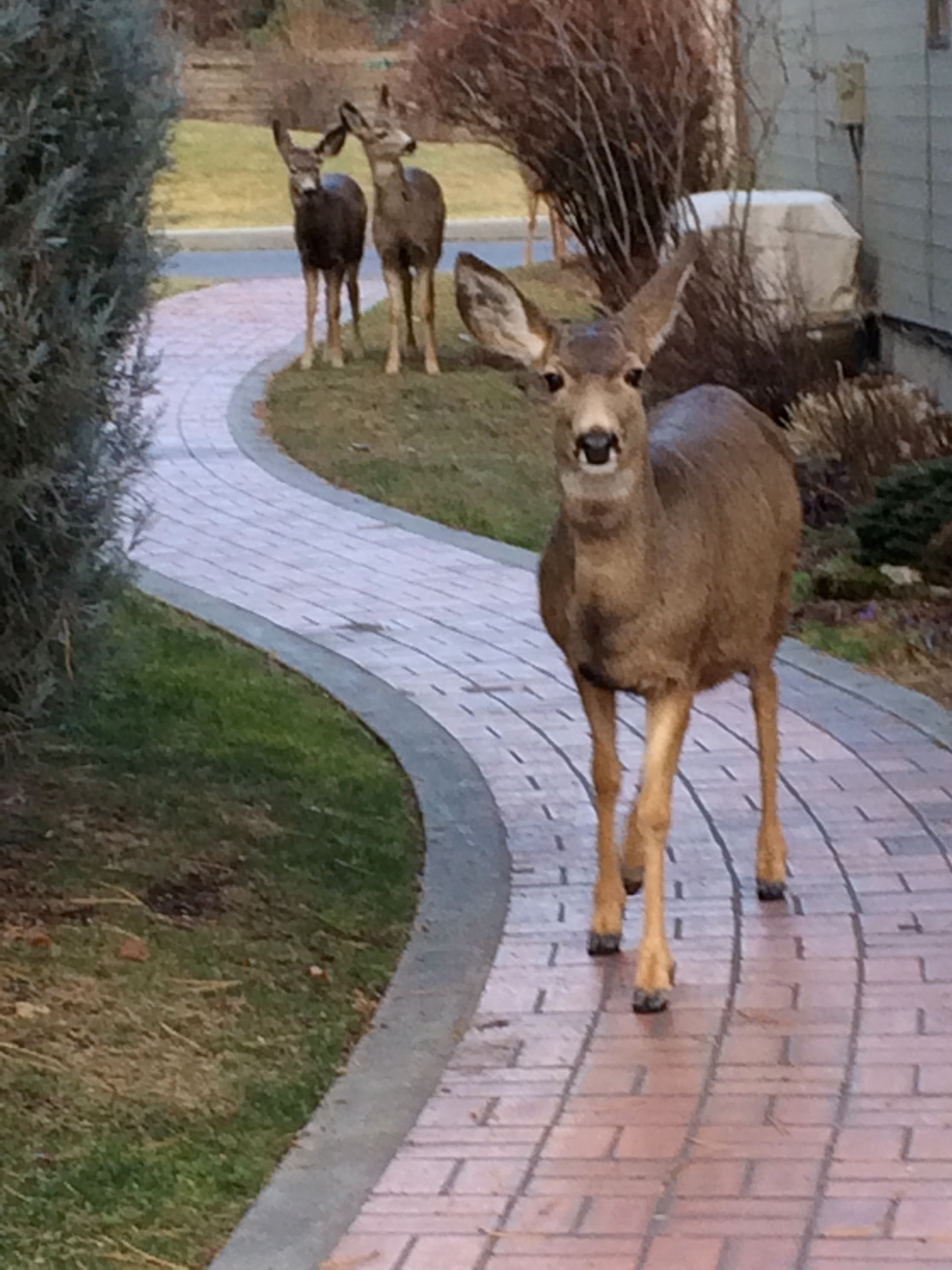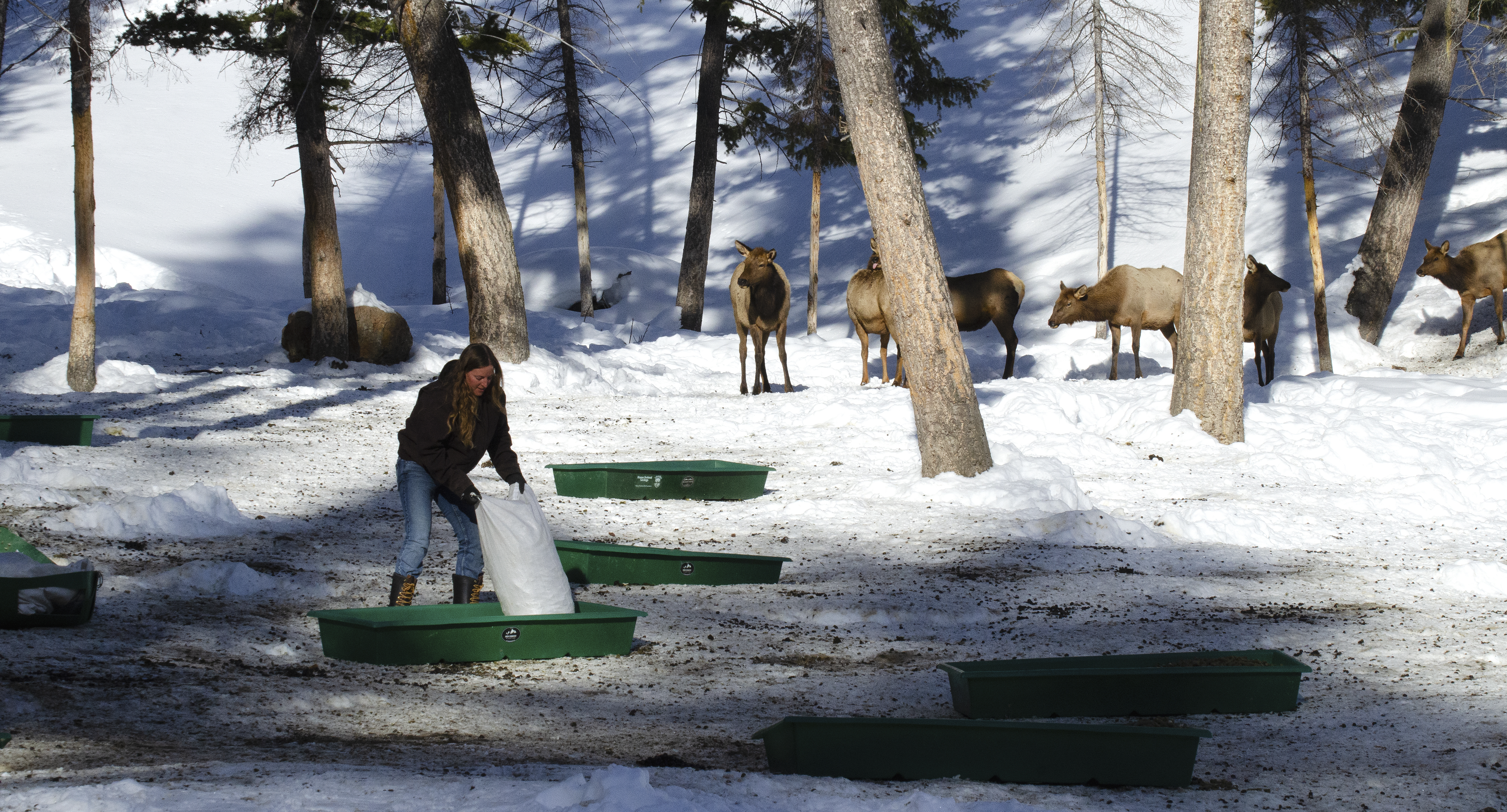Seeing a herd of deer outside your door or a herd of elk may seem idyllic, and during winter they can almost seem tame. But truth is they’re wild animals that need to remain wild animals, and feeding them can quickly create a variety of problems.
Here’s how a simple well-meaning act can lead to a neighborhood-wide conflict.
The same, sad story
A neighbor has been leaving feed on their property all winter. The wintering deer catch wind of this 24-hour eatery and tell their out-of-town friends. The numbers grow, and pretty soon other wildlife, including coyotes and cougars, hear about this backyard buffet as well.
The deer and elk eat what’s available and start patrolling the neighborhoods for more readily-available grub, while predators start sourcing their own food – including household pets – as residential conflicts with humans increase.






